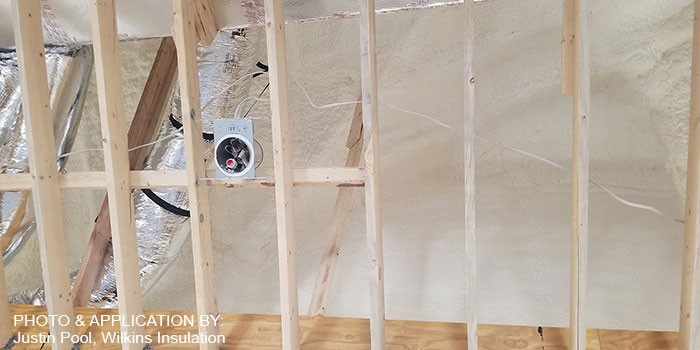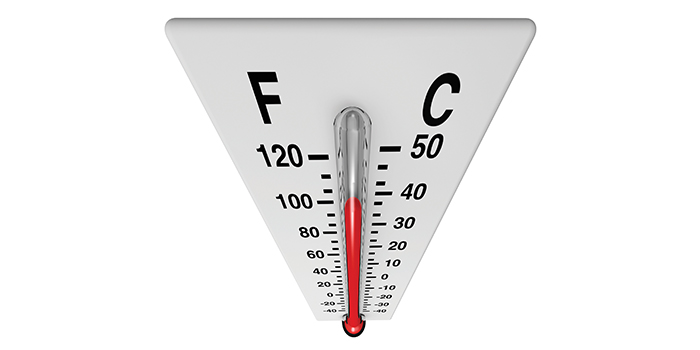Unvented Attics In The Summer


JUPITER, FL – June, 2018 – Inspect buildings with spray foam in them on a regular basis, most of the time as either quality control checks or as failure investigations. While on one of these projects, I was inspecting the spray foam insulation in an unvented attic assembly in Texas. The Texas sun was burning hot and bright that day with high temperatures around 100°F. When I stepped into the vented storage area above the garage, it felt like a typical attic space, you know, hot and muggy. On the other hand, the unvented attic was between 75°F and 80°F. Not surprising for those of us in the know, right? The guy that came into the attic after me was not in the know… until now. By experiencing the temperature inside the unvented attic first hand, he got it and now he wants spray foam for his own house. He said that his first reaction was to call his wife and tell her, “You are not going to believe this…”
Did you catch that? Even though he was standing there, and the benefit was self-evident, he knew that another person “not in the know,” like his wife, was not going to believe it.
This design works for several key reasons:
- By using air-impermeable insulation in direct contact with the underside of the roof deck, the interior air is separated from the exterior by thermal insulation, therefore the attic air cannot “reach” the roof deck, the most likely condensing surface
- Florida Solar Energy Center found that attic ventilation in humid climates can increase attic moisture levels, so by air sealing the attic and eliminating attic ventilation, we can better control attic moisture levels and lower moisture-related risk
Surprisingly, this “new age” concept of eliminating “traditional” ventilation from attics dates back more than 30 years to the mid-1980s. These assemblies have shown excellent performance characteristics over the years by changing the thermal boundary and achieving some very important benefits:
- Moving the HVAC system, the air handler and ductwork, into the thermal envelope, and therefore, conditioning or semi-conditioning the space
- Protecting the attic from exterior contaminants like heat, moisture, dirt, pollen, and other allergens
- Eliminating heat and moisture loads associated with “traditional” ventilation caused by unwanted air infiltration entering the structure through the attic

The building industry has known for years that placing the HVAC system inside the thermal envelope is very beneficial for several reasons. First, lowering the ambient temperature surrounding the HVAC system lowers the operating stress on the equipment, and by lowering the delta T, or temperature difference across the air handler and the ductwork, the system will be more efficient. Furthermore, ALL DUCTS LEAK and this duct leakage will now be maintained inside the thermal envelope, once again increasing the overall efficiency of the system.
Now, these attics are “semi-conditioned” due to:
- Passive interconnection between the living space and the attic through the ceiling membrane (this means no insulation on the attic floor)
- Internal convection currents created by the inherent temperature difference between the living space and the attic
- Duct leakage that is now maintained within the newly created thermal envelope
So rather than having an attic operating at 120°F or higher applying a heat and moisture load above the living space, a sealed, unvented, semi-conditioned attic provides temperatures that are typically within eight to 12 degrees of the living space, or approximately 80°F to 90°F at the hottest part of the day.
When you move the mechanical system, the air handler, and ductwork inside the building envelope by moving the insulation, from real world experience, we know that the building load is less and the tonnage required should be lowered, but the standard Manual J calculation tells us to increase the tonnage because you have increased the surface area and volume of the building. How can the real world be different from the calculation?
Well, Manual J calculations base infiltration on volume, so when the volume increases, by adding the volume of the attic to the calculation, it appears that the building infiltration and energy load also increase. However, in the real world, even though there is more building envelope surface area and more volume, a tight house with a sealed attic will have fewer air changes than a leaky house with a vented attic. It’s not the volume alone that matters, it’s the actual leakage that matters.
When you are introducing the idea of spray foam insulation in unvented attics to your prospects, it’s these benefits that prove sealed, unvented, semi-conditioned attics are much more energy efficient than vented attics with leaky mechanical systems. So make sure to pick your favorite unvented attic concepts or incorporate personal stories in your sales pitch.
Disqus website name not provided.









































